-
EXECUTIVE SUMMARY
-
\r\n
-
Market Overview
-
\r\n 1.2. Key Findings
-
\r\n
-
Market Segmentation
-
\r\n 1.4. Competitive Landscape
-
\r\n 1.5. Challenges and Opportunities
-
\r\n
-
Future Outlook
-
\r\n
-
\r\n
-
\r\n
-
\r\n 2. MARKET INTRODUCTION
-
\r\n 2.1. Definition
-
\r\n
-
Scope of the study
- Research Objective
- Assumption
-
\r\n
-
\r\n
-
\r\n 2.2.3. Limitations
-
\r\n 3. RESEARCH METHODOLOGY
-
\r\n 3.1. Overview
-
\r\n
-
Data Mining
-
\r\n
-
Secondary Research
- Primary Interviews and Information Gathering Process
- Breakdown of Primary Respondents
-
\r\n 3.4. Primary Research
-
\r\n
-
\r\n
-
\r\n
-
Forecasting Model
- Bottom-Up Approach
-
\r\n 3.6. Market Size Estimation
-
\r\n
-
\r\n 3.6.2. Top-Down
-
Approach
-
\r\n 3.7. Data Triangulation
-
\r\n 3.8. Validation
-
\r\n
-
\r\n
-
\r\n
-
\r\n 4.
-
MARKET DYNAMICS
-
\r\n
-
Overview
-
\r\n 4.2. Drivers
-
\r\n 4.3. Restraints
-
\r\n
-
Opportunities
-
\r\n 5. MARKET FACTOR ANALYSIS
-
\r\n 5.1. Value chain Analysis
-
\r\n
-
Porter's Five Forces Analysis
- Bargaining Power of Buyers
- Threat of New Entrants
- Threat of Substitutes
- Opportunity and Threat Analysis
-
\r\n 5.2.1. Bargaining Power of Suppliers
-
\r\n
-
\r\n
-
\r\n
-
\r\n 5.2.5. Intensity
-
of Rivalry
-
\r\n 5.3. COVID-19 Impact Analysis
-
\r\n 5.3.1. Market
-
Impact Analysis
-
\r\n 5.3.2. Regional Impact
-
\r\n
-
\r\n
-
\r\n
-
\r\n
-
\r\n 6. Medical Device Coating Market, BY Type (USD Billion)
-
\r\n
-
Antimicrobial
-
\r\n 6.2. Drug-Eluting
-
\r\n 6.3. Hydrophilic
-
\r\n
-
Anti Therombogenic
-
\r\n 7. Medical Device Coating Market, BY Application
-
(USD Billion)
-
\r\n
-
Cardiovascular
-
\r\n 7.2. Orthopedics
-
\r\n
-
Neurology
-
\r\n
-
Gynecology
-
\r\n 7.5. Others
-
\r\n
-
Medical Device Coating Market, BY Regional (USD Billion)
-
\r\n 8.1. North America
-
\r\n
-
\r\n 8.1.2. Canada
-
\r\n
-
\r\n 8.2.1. Germany
-
\r\n
-
\r\n 8.2.3. France
-
\r\n
-
\r\n 8.2.5. Italy
-
\r\n
-
\r\n 8.2.7. Rest
-
of Europe
-
\r\n 8.3. APAC
-
\r\n 8.3.1. China
-
\r\n
-
\r\n 8.3.3. Japan
-
\r\n
-
\r\n
-
\r\n 8.3.6. Thailand
-
\r\n
-
\r\n 8.3.8. Rest
-
of APAC
-
\r\n 8.4. South America
-
\r\n 8.4.1. Brazil
-
\r\n
-
\r\n 8.4.3. Argentina
-
\r\n
-
\r\n
-
\r\n
-
\r\n
-
\r\n 8.5.3. Rest
-
of MEA
-
\r\n
-
\r\n
-
\r\n
-
\r\n 9. Competitive Landscape
-
\r\n 9.1. Overview
-
\r\n
-
\r\n 9.3. Market share Analysis
-
\r\n 9.4. Major Growth Strategy
-
in the Medical Device Coating Market
-
\r\n 9.5. Competitive Benchmarking
-
\r\n
-
Coating Market
-
\r\n
-
\r\n 9.7.1. New
-
Product Launch/Service Deployment
-
\r\n 9.7.2. Merger
-
& Acquisitions
-
\r\n 9.7.3. Joint Ventures
-
\r\n
-
\r\n 9.8.1. Sales
-
and Operating Income
-
\r\n 9.8.2. Major Players R&D Expenditure.
-
\r\n 10. Company Profiles
-
\r\n 10.1. Surmodics
-
\r\n 10.1.1. Financial
-
Overview
-
\r\n 10.1.2. Products Offered
-
\r\n
-
\r\n
-
\r\n 10.1.5. Key
-
Strategies
-
\r\n 10.2. Fujifilm
-
\r\n 10.2.1. Financial
-
Overview
-
\r\n 10.2.2. Products Offered
-
\r\n
-
\r\n
-
\r\n 10.2.5. Key
-
Strategies
-
\r\n 10.3. Thermo Fisher Scientific
-
\r\n 10.3.1. Financial
-
Overview
-
\r\n 10.3.2. Products Offered
-
\r\n
-
\r\n
-
\r\n 10.3.5. Key
-
Strategies
-
\r\n 10.4. Smith & Nephew
-
\r\n 10.4.1. Financial
-
Overview
-
\r\n 10.4.2. Products Offered
-
\r\n
-
\r\n
-
\r\n 10.4.5. Key
-
Strategies
-
\r\n 10.5. Heraeus
-
\r\n 10.5.1. Financial
-
Overview
-
\r\n 10.5.2. Products Offered
-
\r\n
-
\r\n
-
\r\n 10.5.5. Key
-
Strategies
-
\r\n 10.6. Medtronic
-
\r\n 10.6.1. Financial
-
Overview
-
\r\n 10.6.2. Products Offered
-
\r\n
-
\r\n
-
\r\n 10.6.5. Key
-
Strategies
-
\r\n 10.7. Coatings for Industry
-
\r\n 10.7.1. Financial
-
Overview
-
\r\n 10.7.2. Products Offered
-
\r\n
-
\r\n
-
\r\n 10.7.5. Key
-
Strategies
-
\r\n 10.8. St. Jude Medical
-
\r\n 10.8.1. Financial
-
Overview
-
\r\n 10.8.2. Products Offered
-
\r\n
-
\r\n
-
\r\n 10.8.5. Key
-
Strategies
-
\r\n 10.9. Ascent Healthcare Solutions
-
\r\n 10.9.1. Financial
-
Overview
-
\r\n 10.9.2. Products Offered
-
\r\n
-
\r\n
-
\r\n 10.9.5. Key
-
Strategies
-
\r\n 10.10. B. Braun Melsungen
-
\r\n 10.10.1. Financial
-
Overview
-
\r\n 10.10.2. Products Offered
-
\r\n
-
\r\n
-
\r\n 10.10.5. Key
-
Strategies
-
\r\n 10.11. Biocoat
-
\r\n 10.11.1. Financial
-
Overview
-
\r\n 10.11.2. Products Offered
-
\r\n
-
\r\n
-
\r\n 10.11.5. Key
-
Strategies
-
\r\n 10.12. Johnson & Johnson
-
\r\n 10.12.1. Financial
-
Overview
-
\r\n 10.12.2. Products Offered
-
\r\n
-
\r\n
-
\r\n 10.12.5. Key
-
Strategies
-
\r\n 10.13. Abbott Laboratories
-
\r\n 10.13.1. Financial
-
Overview
-
\r\n 10.13.2. Products Offered
-
\r\n
-
\r\n
-
\r\n 10.13.5. Key
-
Strategies
-
\r\n 10.14. Boston Scientific
-
\r\n 10.14.1. Financial
-
Overview
-
\r\n 10.14.2. Products Offered
-
\r\n
-
\r\n
-
\r\n 10.14.5. Key
-
Strategies
-
\r\n 11. Appendix
-
\r\n 11.1. References
-
\r\n
-
\r\nLIST Of tables
-
\r\n
-
\r\n Table 1. LIST OF ASSUMPTIONS
-
\r\n Table 2. North America Medical Device Coating
-
US
-
Europe
- UK
- Russia
- Spain
- India
- South Korea
- Malaysia
- Indonesia
- Mexico
- Rest of South America
-
MEA
- GCC Countries
- South Africa
-
Competitive Analysis
-
Leading Players in Terms of Number of Developments in the Medical Device
-
Key developments and growth strategies
-
Major Players Financial Matrix
- Key Developments
- SWOT Analysis
- Key Developments
- SWOT Analysis
- Key Developments
- SWOT Analysis
- Key Developments
- SWOT Analysis
- Key Developments
- SWOT Analysis
- Key Developments
- SWOT Analysis
- Key Developments
- SWOT Analysis
- Key Developments
- SWOT Analysis
- Key Developments
- SWOT Analysis
- Key Developments
- SWOT Analysis
- Key Developments
- SWOT Analysis
- Key Developments
- SWOT Analysis
- Key Developments
- SWOT Analysis
- Key Developments
- SWOT Analysis
-
Related Reports
-
Market SIZE ESTIMATES & FORECAST, BY TYPE, 2019-2035 (USD Billions)
-
\r\n Table 3. North America Medical Device Coating
-
Market SIZE ESTIMATES & FORECAST, BY APPLICATION, 2019-2035 (USD Billions)
-
\r\n Table 4.
-
North America Medical Device Coating Market SIZE ESTIMATES & FORECAST, BY REGIONAL,
-
\r\n Table 5. US Medical Device Coating Market SIZE ESTIMATES &
-
FORECAST, BY TYPE, 2019-2035 (USD Billions)
-
\r\n Table 6. US Medical Device Coating Market
-
SIZE ESTIMATES & FORECAST, BY APPLICATION, 2019-2035 (USD Billions)
-
\r\n Table 7. US Medical Device Coating Market
-
SIZE ESTIMATES & FORECAST, BY REGIONAL, 2019-2035 (USD Billions)
-
\r\n Table 8. Canada Medical Device Coating
-
Market SIZE ESTIMATES & FORECAST, BY TYPE, 2019-2035 (USD Billions)
-
\r\n Table 9. Canada Medical Device Coating
-
Market SIZE ESTIMATES & FORECAST, BY APPLICATION, 2019-2035 (USD Billions)
-
\r\n Table 10.
-
Canada Medical Device Coating Market SIZE ESTIMATES & FORECAST, BY REGIONAL,
-
\r\n Table 11. Europe Medical Device Coating Market SIZE ESTIMATES
-
& FORECAST, BY TYPE, 2019-2035 (USD Billions)
-
\r\n Table 12. Europe Medical Device Coating
-
Market SIZE ESTIMATES & FORECAST, BY APPLICATION, 2019-2035 (USD Billions)
-
\r\n Table 13.
-
Europe Medical Device Coating Market SIZE ESTIMATES & FORECAST, BY REGIONAL,
-
\r\n Table 14. Germany Medical Device Coating Market SIZE ESTIMATES
-
& FORECAST, BY TYPE, 2019-2035 (USD Billions)
-
\r\n Table 15. Germany Medical Device Coating
-
Market SIZE ESTIMATES & FORECAST, BY APPLICATION, 2019-2035 (USD Billions)
-
\r\n Table 16.
-
Germany Medical Device Coating Market SIZE ESTIMATES & FORECAST, BY REGIONAL,
-
\r\n Table 17. UK Medical Device Coating Market SIZE ESTIMATES
-
& FORECAST, BY TYPE, 2019-2035 (USD Billions)
-
\r\n Table 18. UK Medical Device Coating Market
-
SIZE ESTIMATES & FORECAST, BY APPLICATION, 2019-2035 (USD Billions)
-
\r\n Table 19. UK Medical Device Coating Market
-
SIZE ESTIMATES & FORECAST, BY REGIONAL, 2019-2035 (USD Billions)
-
\r\n Table 20. France Medical Device Coating
-
Market SIZE ESTIMATES & FORECAST, BY TYPE, 2019-2035 (USD Billions)
-
\r\n Table 21. France Medical Device Coating
-
Market SIZE ESTIMATES & FORECAST, BY APPLICATION, 2019-2035 (USD Billions)
-
\r\n Table 22.
-
France Medical Device Coating Market SIZE ESTIMATES & FORECAST, BY REGIONAL,
-
\r\n Table 23. Russia Medical Device Coating Market SIZE ESTIMATES
-
& FORECAST, BY TYPE, 2019-2035 (USD Billions)
-
\r\n Table 24. Russia Medical Device Coating
-
Market SIZE ESTIMATES & FORECAST, BY APPLICATION, 2019-2035 (USD Billions)
-
\r\n Table 25.
-
Russia Medical Device Coating Market SIZE ESTIMATES & FORECAST, BY REGIONAL,
-
\r\n Table 26. Italy Medical Device Coating Market SIZE ESTIMATES
-
& FORECAST, BY TYPE, 2019-2035 (USD Billions)
-
\r\n Table 27. Italy Medical Device Coating
-
Market SIZE ESTIMATES & FORECAST, BY APPLICATION, 2019-2035 (USD Billions)
-
\r\n Table 28.
-
Italy Medical Device Coating Market SIZE ESTIMATES & FORECAST, BY REGIONAL,
-
\r\n Table 29. Spain Medical Device Coating Market SIZE ESTIMATES
-
& FORECAST, BY TYPE, 2019-2035 (USD Billions)
-
\r\n Table 30. Spain Medical Device Coating
-
Market SIZE ESTIMATES & FORECAST, BY APPLICATION, 2019-2035 (USD Billions)
-
\r\n Table 31.
-
Spain Medical Device Coating Market SIZE ESTIMATES & FORECAST, BY REGIONAL,
-
\r\n Table 32. Rest of Europe Medical Device Coating Market SIZE
-
ESTIMATES & FORECAST, BY TYPE, 2019-2035 (USD Billions)
-
\r\n Table 33. Rest of Europe Medical Device
-
Coating Market SIZE ESTIMATES & FORECAST, BY APPLICATION, 2019-2035 (USD Billions)
-
\r\n Table 34.
-
Rest of Europe Medical Device Coating Market SIZE ESTIMATES & FORECAST, BY REGIONAL,
-
\r\n Table 35. APAC Medical Device Coating Market SIZE ESTIMATES
-
& FORECAST, BY TYPE, 2019-2035 (USD Billions)
-
\r\n Table 36. APAC Medical Device Coating Market
-
SIZE ESTIMATES & FORECAST, BY APPLICATION, 2019-2035 (USD Billions)
-
\r\n Table 37. APAC Medical Device Coating Market
-
SIZE ESTIMATES & FORECAST, BY REGIONAL, 2019-2035 (USD Billions)
-
\r\n Table 38. China Medical Device Coating
-
Market SIZE ESTIMATES & FORECAST, BY TYPE, 2019-2035 (USD Billions)
-
\r\n Table 39. China Medical Device Coating
-
Market SIZE ESTIMATES & FORECAST, BY APPLICATION, 2019-2035 (USD Billions)
-
\r\n Table 40.
-
China Medical Device Coating Market SIZE ESTIMATES & FORECAST, BY REGIONAL,
-
\r\n Table 41. India Medical Device Coating Market SIZE ESTIMATES
-
& FORECAST, BY TYPE, 2019-2035 (USD Billions)
-
\r\n Table 42. India Medical Device Coating
-
Market SIZE ESTIMATES & FORECAST, BY APPLICATION, 2019-2035 (USD Billions)
-
\r\n Table 43.
-
India Medical Device Coating Market SIZE ESTIMATES & FORECAST, BY REGIONAL,
-
\r\n Table 44. Japan Medical Device Coating Market SIZE ESTIMATES
-
& FORECAST, BY TYPE, 2019-2035 (USD Billions)
-
\r\n Table 45. Japan Medical Device Coating
-
Market SIZE ESTIMATES & FORECAST, BY APPLICATION, 2019-2035 (USD Billions)
-
\r\n Table 46.
-
Japan Medical Device Coating Market SIZE ESTIMATES & FORECAST, BY REGIONAL,
-
\r\n Table 47. South Korea Medical Device Coating Market SIZE ESTIMATES
-
& FORECAST, BY TYPE, 2019-2035 (USD Billions)
-
\r\n Table 48. South Korea Medical Device Coating
-
Market SIZE ESTIMATES & FORECAST, BY APPLICATION, 2019-2035 (USD Billions)
-
\r\n Table 49.
-
South Korea Medical Device Coating Market SIZE ESTIMATES & FORECAST, BY REGIONAL,
-
\r\n Table 50. Malaysia Medical Device Coating Market SIZE ESTIMATES
-
& FORECAST, BY TYPE, 2019-2035 (USD Billions)
-
\r\n Table 51. Malaysia Medical Device Coating
-
Market SIZE ESTIMATES & FORECAST, BY APPLICATION, 2019-2035 (USD Billions)
-
\r\n Table 52.
-
Malaysia Medical Device Coating Market SIZE ESTIMATES & FORECAST, BY REGIONAL,
-
\r\n Table 53. Thailand Medical Device Coating Market SIZE ESTIMATES
-
& FORECAST, BY TYPE, 2019-2035 (USD Billions)
-
\r\n Table 54. Thailand Medical Device Coating
-
Market SIZE ESTIMATES & FORECAST, BY APPLICATION, 2019-2035 (USD Billions)
-
\r\n Table 55.
-
Thailand Medical Device Coating Market SIZE ESTIMATES & FORECAST, BY REGIONAL,
-
\r\n Table 56. Indonesia Medical Device Coating Market SIZE ESTIMATES
-
& FORECAST, BY TYPE, 2019-2035 (USD Billions)
-
\r\n Table 57. Indonesia Medical Device Coating
-
Market SIZE ESTIMATES & FORECAST, BY APPLICATION, 2019-2035 (USD Billions)
-
\r\n Table 58.
-
Indonesia Medical Device Coating Market SIZE ESTIMATES & FORECAST, BY REGIONAL,
-
\r\n Table 59. Rest of APAC Medical Device Coating Market SIZE
-
ESTIMATES & FORECAST, BY TYPE, 2019-2035 (USD Billions)
-
\r\n Table 60. Rest of APAC Medical Device Coating
-
Market SIZE ESTIMATES & FORECAST, BY APPLICATION, 2019-2035 (USD Billions)
-
\r\n Table 61.
-
Rest of APAC Medical Device Coating Market SIZE ESTIMATES & FORECAST, BY REGIONAL,
-
\r\n Table 62. South America Medical Device Coating Market SIZE
-
ESTIMATES & FORECAST, BY TYPE, 2019-2035 (USD Billions)
-
\r\n Table 63. South America Medical Device
-
Coating Market SIZE ESTIMATES & FORECAST, BY APPLICATION, 2019-2035 (USD Billions)
-
\r\n Table 64.
-
South America Medical Device Coating Market SIZE ESTIMATES & FORECAST, BY REGIONAL,
-
\r\n Table 65. Brazil Medical Device Coating Market SIZE ESTIMATES
-
& FORECAST, BY TYPE, 2019-2035 (USD Billions)
-
\r\n Table 66. Brazil Medical Device Coating
-
Market SIZE ESTIMATES & FORECAST, BY APPLICATION, 2019-2035 (USD Billions)
-
\r\n Table 67.
-
Brazil Medical Device Coating Market SIZE ESTIMATES & FORECAST, BY REGIONAL,
-
\r\n Table 68. Mexico Medical Device Coating Market SIZE ESTIMATES
-
& FORECAST, BY TYPE, 2019-2035 (USD Billions)
-
\r\n Table 69. Mexico Medical Device Coating
-
Market SIZE ESTIMATES & FORECAST, BY APPLICATION, 2019-2035 (USD Billions)
-
\r\n Table 70.
-
Mexico Medical Device Coating Market SIZE ESTIMATES & FORECAST, BY REGIONAL,
-
\r\n Table 71. Argentina Medical Device Coating Market SIZE ESTIMATES
-
& FORECAST, BY TYPE, 2019-2035 (USD Billions)
-
\r\n Table 72. Argentina Medical Device Coating
-
Market SIZE ESTIMATES & FORECAST, BY APPLICATION, 2019-2035 (USD Billions)
-
\r\n Table 73.
-
Argentina Medical Device Coating Market SIZE ESTIMATES & FORECAST, BY REGIONAL,
-
\r\n Table 74. Rest of South America Medical Device Coating Market
-
SIZE ESTIMATES & FORECAST, BY TYPE, 2019-2035 (USD Billions)
-
\r\n Table 75. Rest of South America Medical
-
Device Coating Market SIZE ESTIMATES & FORECAST, BY APPLICATION, 2019-2035 (USD
-
Billions)
-
\r\n
-
Rest of South America Medical Device Coating Market SIZE ESTIMATES
-
& FORECAST, BY REGIONAL, 2019-2035 (USD Billions)
-
\r\n Table 77. MEA Medical Device Coating Market
-
SIZE ESTIMATES & FORECAST, BY TYPE, 2019-2035 (USD Billions)
-
\r\n Table 78. MEA Medical Device Coating Market
-
SIZE ESTIMATES & FORECAST, BY APPLICATION, 2019-2035 (USD Billions)
-
\r\n Table 79. MEA Medical Device Coating Market
-
SIZE ESTIMATES & FORECAST, BY REGIONAL, 2019-2035 (USD Billions)
-
\r\n Table 80. GCC Countries Medical Device
-
Coating Market SIZE ESTIMATES & FORECAST, BY TYPE, 2019-2035 (USD Billions)
-
\r\n Table 81.
-
GCC Countries Medical Device Coating Market SIZE ESTIMATES & FORECAST, BY APPLICATION,
-
\r\n Table 82. GCC Countries Medical Device Coating Market SIZE
-
ESTIMATES & FORECAST, BY REGIONAL, 2019-2035 (USD Billions)
-
\r\n Table 83. South Africa Medical Device Coating
-
Market SIZE ESTIMATES & FORECAST, BY TYPE, 2019-2035 (USD Billions)
-
\r\n Table 84. South Africa Medical Device Coating
-
Market SIZE ESTIMATES & FORECAST, BY APPLICATION, 2019-2035 (USD Billions)
-
\r\n Table 85.
-
South Africa Medical Device Coating Market SIZE ESTIMATES & FORECAST, BY REGIONAL,
-
\r\n Table 86. Rest of MEA Medical Device Coating Market SIZE ESTIMATES
-
& FORECAST, BY TYPE, 2019-2035 (USD Billions)
-
\r\n Table 87. Rest of MEA Medical Device Coating
-
Market SIZE ESTIMATES & FORECAST, BY APPLICATION, 2019-2035 (USD Billions)
-
\r\n Table 88.
-
Rest of MEA Medical Device Coating Market SIZE ESTIMATES & FORECAST, BY REGIONAL,
-
\r\n Table 89. PRODUCT LAUNCH/PRODUCT DEVELOPMENT/APPROVAL
-
\r\n Table 90.
-
ACQUISITION/PARTNERSHIP
-
\r\n
-
\r\n
-
\r\nLIST
-
Of figures
-
\r\n
-
\r\n Figure 1. MARKET SYNOPSIS
-
\r\n Figure 2. NORTH AMERICA MEDICAL DEVICE
-
COATING MARKET ANALYSIS
-
\r\n
-
US MEDICAL DEVICE COATING MARKET ANALYSIS BY TYPE
-
\r\n Figure 4. US MEDICAL DEVICE COATING MARKET
-
ANALYSIS BY APPLICATION
-
\r\n
-
US MEDICAL DEVICE COATING MARKET ANALYSIS BY REGIONAL
-
\r\n Figure 6. CANADA MEDICAL DEVICE COATING
-
MARKET ANALYSIS BY TYPE
-
\r\n
-
CANADA MEDICAL DEVICE COATING MARKET ANALYSIS BY APPLICATION
-
\r\n Figure 8. CANADA MEDICAL DEVICE COATING
-
MARKET ANALYSIS BY REGIONAL
-
\r\n
-
EUROPE MEDICAL DEVICE COATING MARKET ANALYSIS
-
\r\n Figure 10. GERMANY MEDICAL DEVICE COATING
-
MARKET ANALYSIS BY TYPE
-
\r\n
-
GERMANY MEDICAL DEVICE COATING MARKET ANALYSIS BY APPLICATION
-
\r\n Figure 12. GERMANY MEDICAL DEVICE COATING
-
MARKET ANALYSIS BY REGIONAL
-
\r\n
-
UK MEDICAL DEVICE COATING MARKET ANALYSIS BY TYPE
-
\r\n Figure 14. UK MEDICAL DEVICE COATING MARKET
-
ANALYSIS BY APPLICATION
-
\r\n
-
UK MEDICAL DEVICE COATING MARKET ANALYSIS BY REGIONAL
-
\r\n Figure 16. FRANCE MEDICAL DEVICE COATING
-
MARKET ANALYSIS BY TYPE
-
\r\n
-
FRANCE MEDICAL DEVICE COATING MARKET ANALYSIS BY APPLICATION
-
\r\n Figure 18. FRANCE MEDICAL DEVICE COATING
-
MARKET ANALYSIS BY REGIONAL
-
\r\n
-
RUSSIA MEDICAL DEVICE COATING MARKET ANALYSIS BY TYPE
-
\r\n Figure 20. RUSSIA MEDICAL DEVICE COATING
-
MARKET ANALYSIS BY APPLICATION
-
\r\n
-
RUSSIA MEDICAL DEVICE COATING MARKET ANALYSIS BY REGIONAL
-
\r\n Figure 22. ITALY MEDICAL DEVICE COATING
-
MARKET ANALYSIS BY TYPE
-
\r\n
-
ITALY MEDICAL DEVICE COATING MARKET ANALYSIS BY APPLICATION
-
\r\n Figure 24. ITALY MEDICAL DEVICE COATING
-
MARKET ANALYSIS BY REGIONAL
-
\r\n
-
SPAIN MEDICAL DEVICE COATING MARKET ANALYSIS BY TYPE
-
\r\n Figure 26. SPAIN MEDICAL DEVICE COATING
-
MARKET ANALYSIS BY APPLICATION
-
\r\n
-
SPAIN MEDICAL DEVICE COATING MARKET ANALYSIS BY REGIONAL
-
\r\n Figure 28. REST OF EUROPE MEDICAL DEVICE
-
COATING MARKET ANALYSIS BY TYPE
-
\r\n Figure 29. REST OF EUROPE MEDICAL DEVICE COATING MARKET ANALYSIS
-
BY APPLICATION
-
\r\n
-
REST OF EUROPE MEDICAL DEVICE COATING MARKET ANALYSIS BY REGIONAL
-
\r\n Figure 31. APAC MEDICAL DEVICE COATING
-
MARKET ANALYSIS
-
\r\n
-
CHINA MEDICAL DEVICE COATING MARKET ANALYSIS BY TYPE
-
\r\n Figure 33. CHINA MEDICAL DEVICE COATING
-
MARKET ANALYSIS BY APPLICATION
-
\r\n
-
CHINA MEDICAL DEVICE COATING MARKET ANALYSIS BY REGIONAL
-
\r\n Figure 35. INDIA MEDICAL DEVICE COATING
-
MARKET ANALYSIS BY TYPE
-
\r\n
-
INDIA MEDICAL DEVICE COATING MARKET ANALYSIS BY APPLICATION
-
\r\n Figure 37. INDIA MEDICAL DEVICE COATING
-
MARKET ANALYSIS BY REGIONAL
-
\r\n
-
JAPAN MEDICAL DEVICE COATING MARKET ANALYSIS BY TYPE
-
\r\n Figure 39. JAPAN MEDICAL DEVICE COATING
-
MARKET ANALYSIS BY APPLICATION
-
\r\n
-
JAPAN MEDICAL DEVICE COATING MARKET ANALYSIS BY REGIONAL
-
\r\n Figure 41. SOUTH KOREA MEDICAL DEVICE COATING
-
MARKET ANALYSIS BY TYPE
-
\r\n
-
SOUTH KOREA MEDICAL DEVICE COATING MARKET ANALYSIS BY APPLICATION
-
\r\n Figure 43. SOUTH KOREA MEDICAL DEVICE COATING
-
MARKET ANALYSIS BY REGIONAL
-
\r\n
-
MALAYSIA MEDICAL DEVICE COATING MARKET ANALYSIS BY TYPE
-
\r\n Figure 45. MALAYSIA MEDICAL DEVICE COATING
-
MARKET ANALYSIS BY APPLICATION
-
\r\n
-
MALAYSIA MEDICAL DEVICE COATING MARKET ANALYSIS BY REGIONAL
-
\r\n Figure 47. THAILAND MEDICAL DEVICE COATING
-
MARKET ANALYSIS BY TYPE
-
\r\n
-
THAILAND MEDICAL DEVICE COATING MARKET ANALYSIS BY APPLICATION
-
\r\n Figure 49. THAILAND MEDICAL DEVICE COATING
-
MARKET ANALYSIS BY REGIONAL
-
\r\n
-
INDONESIA MEDICAL DEVICE COATING MARKET ANALYSIS BY TYPE
-
\r\n Figure 51. INDONESIA MEDICAL DEVICE COATING
-
MARKET ANALYSIS BY APPLICATION
-
\r\n
-
INDONESIA MEDICAL DEVICE COATING MARKET ANALYSIS BY REGIONAL
-
\r\n Figure 53. REST OF APAC MEDICAL DEVICE
-
COATING MARKET ANALYSIS BY TYPE
-
\r\n Figure 54. REST OF APAC MEDICAL DEVICE COATING MARKET ANALYSIS
-
BY APPLICATION
-
\r\n
-
REST OF APAC MEDICAL DEVICE COATING MARKET ANALYSIS BY REGIONAL
-
\r\n Figure 56. SOUTH AMERICA MEDICAL DEVICE
-
COATING MARKET ANALYSIS
-
\r\n
-
BRAZIL MEDICAL DEVICE COATING MARKET ANALYSIS BY TYPE
-
\r\n Figure 58. BRAZIL MEDICAL DEVICE COATING
-
MARKET ANALYSIS BY APPLICATION
-
\r\n
-
BRAZIL MEDICAL DEVICE COATING MARKET ANALYSIS BY REGIONAL
-
\r\n Figure 60. MEXICO MEDICAL DEVICE COATING
-
MARKET ANALYSIS BY TYPE
-
\r\n
-
MEXICO MEDICAL DEVICE COATING MARKET ANALYSIS BY APPLICATION
-
\r\n Figure 62. MEXICO MEDICAL DEVICE COATING
-
MARKET ANALYSIS BY REGIONAL
-
\r\n
-
ARGENTINA MEDICAL DEVICE COATING MARKET ANALYSIS BY TYPE
-
\r\n Figure 64. ARGENTINA MEDICAL DEVICE COATING
-
MARKET ANALYSIS BY APPLICATION
-
\r\n
-
ARGENTINA MEDICAL DEVICE COATING MARKET ANALYSIS BY REGIONAL
-
\r\n Figure 66. REST OF SOUTH AMERICA MEDICAL
-
DEVICE COATING MARKET ANALYSIS BY TYPE
-
\r\n Figure 67. REST OF SOUTH AMERICA MEDICAL DEVICE COATING MARKET
-
ANALYSIS BY APPLICATION
-
\r\n
-
REST OF SOUTH AMERICA MEDICAL DEVICE COATING MARKET ANALYSIS BY
-
REGIONAL
-
\r\n Figure
-
MEA MEDICAL DEVICE COATING MARKET ANALYSIS
-
\r\n Figure 70. GCC COUNTRIES MEDICAL DEVICE COATING MARKET ANALYSIS
-
BY TYPE
-
\r\n Figure
-
GCC COUNTRIES MEDICAL DEVICE COATING MARKET ANALYSIS BY APPLICATION
-
\r\n Figure 72. GCC COUNTRIES MEDICAL DEVICE
-
COATING MARKET ANALYSIS BY REGIONAL
-
\r\n Figure 73. SOUTH AFRICA MEDICAL DEVICE COATING MARKET ANALYSIS
-
BY TYPE
-
\r\n Figure
-
SOUTH AFRICA MEDICAL DEVICE COATING MARKET ANALYSIS BY APPLICATION
-
\r\n Figure 75. SOUTH AFRICA MEDICAL DEVICE
-
COATING MARKET ANALYSIS BY REGIONAL
-
\r\n Figure 76. REST OF MEA MEDICAL DEVICE COATING MARKET ANALYSIS
-
BY TYPE
-
\r\n Figure
-
REST OF MEA MEDICAL DEVICE COATING MARKET ANALYSIS BY APPLICATION
-
\r\n Figure 78. REST OF MEA MEDICAL DEVICE COATING
-
MARKET ANALYSIS BY REGIONAL
-
\r\n
-
KEY BUYING CRITERIA OF MEDICAL DEVICE COATING MARKET
-
\r\n Figure 80. RESEARCH PROCESS OF MRFR
-
\r\n Figure 81. DRO ANALYSIS OF MEDICAL DEVICE
-
COATING MARKET
-
\r\n
-
DRIVERS IMPACT ANALYSIS: MEDICAL DEVICE COATING MARKET
-
\r\n Figure 83. RESTRAINTS IMPACT ANALYSIS:
-
MEDICAL DEVICE COATING MARKET
-
\r\n
-
SUPPLY / VALUE CHAIN: MEDICAL DEVICE COATING MARKET
-
\r\n Figure 85. MEDICAL DEVICE COATING MARKET,
-
BY TYPE, 2025 (% SHARE)
-
\r\n
-
MEDICAL DEVICE COATING MARKET, BY TYPE, 2019 TO 2035 (USD Billions)
-
\r\n Figure 87. MEDICAL DEVICE COATING MARKET,
-
BY APPLICATION, 2025 (% SHARE)
-
\r\n
-
MEDICAL DEVICE COATING MARKET, BY APPLICATION, 2019 TO 2035 (USD
-
Billions)
-
\r\n
-
MEDICAL DEVICE COATING MARKET, BY REGIONAL, 2025 (% SHARE)
-
\r\n Figure 90. MEDICAL DEVICE COATING MARKET,
-
BY REGIONAL, 2019 TO 2035 (USD Billions)
-
\r\n Figure 91. BENCHMARKING OF MAJOR COMPETITORS
-
\r\n
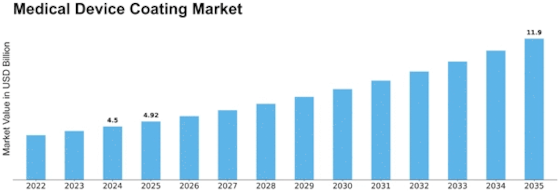

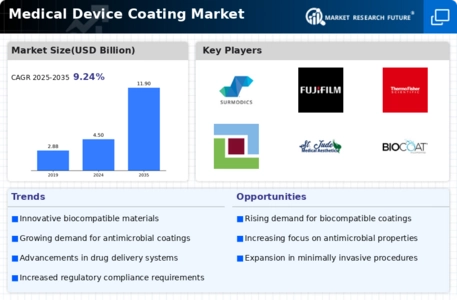
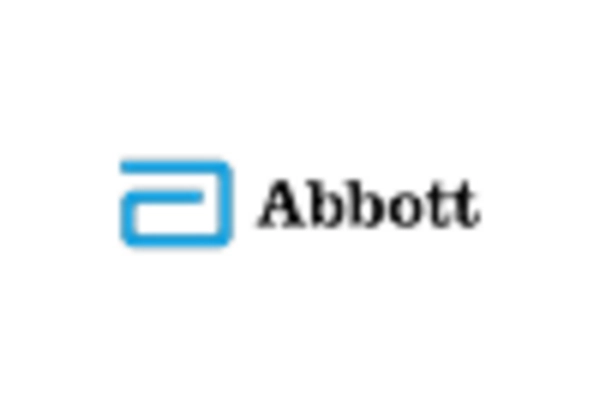
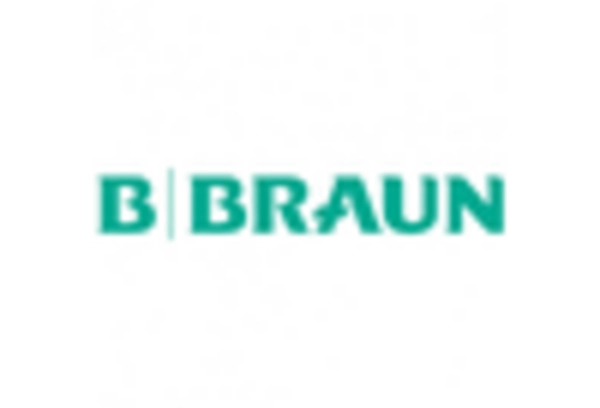
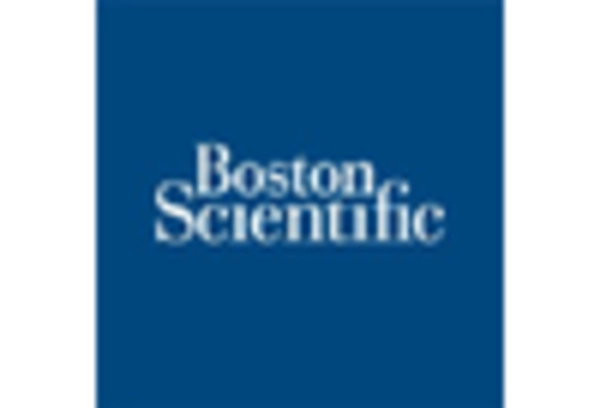


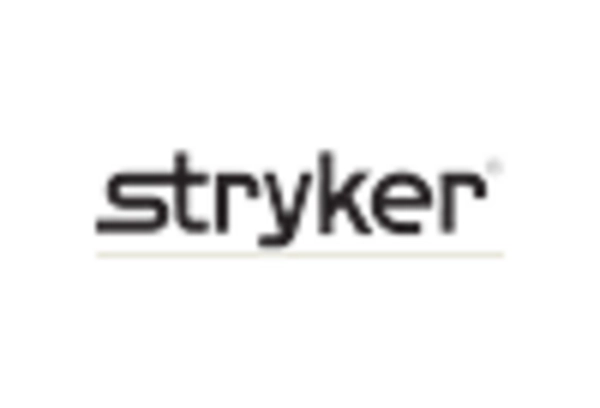

Leave a Comment